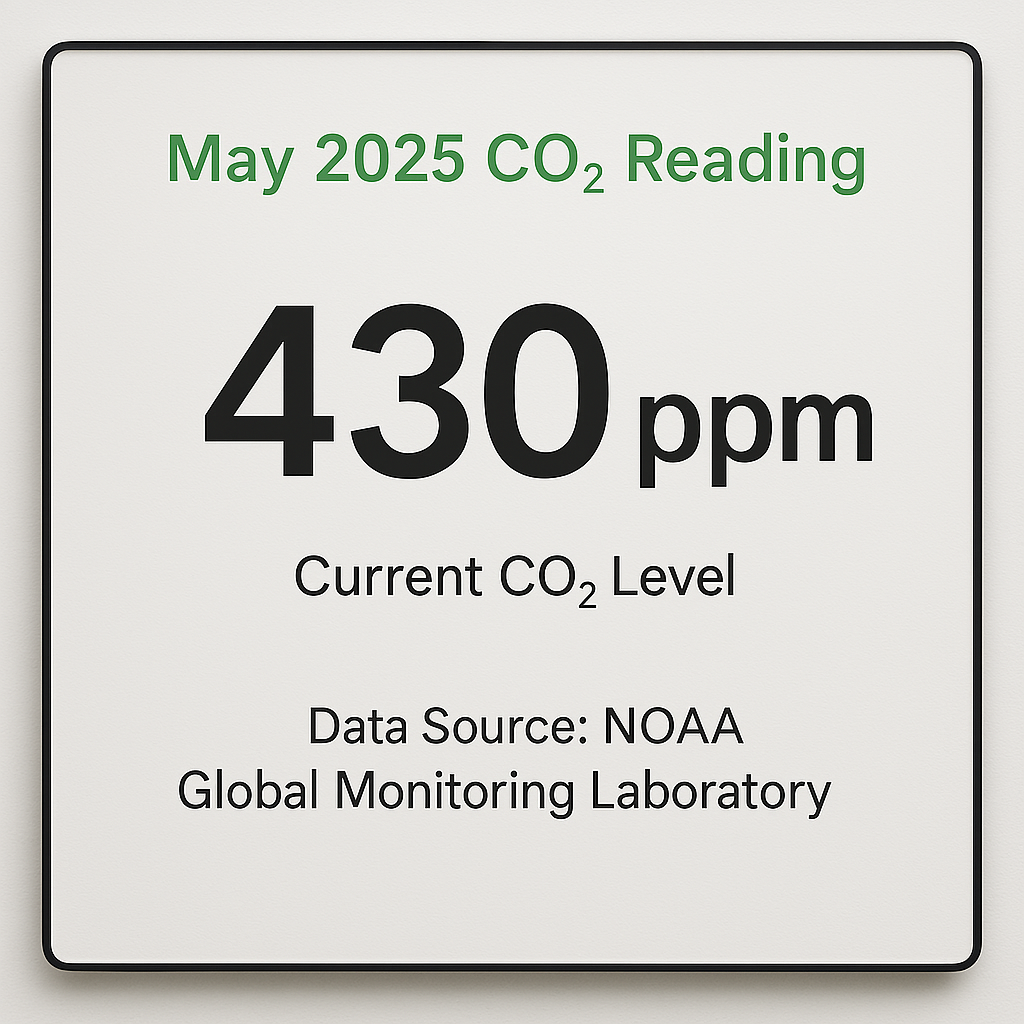
Introduction: A Historic Atmospheric Shift
In May, global CO₂ levels soared to 430 parts per million—a milestone not witnessed for over 30 million years. This reading is more than just a number; it marks a transformative shift in our planet's atmosphere, underscoring the profound impact human activities have on Earth's climate.
The Science: Understanding 430 ppm
The measurement of 430 ppm represents far more than a statistical anomaly—it reflects conditions under which Earth's climate, ecosystems, and weather patterns begin to mirror those from a profoundly different era. Some studies suggest that during that time, temperatures were roughly 5–10°C higher than today, leading to dramatically different natural environments.
- Rapid Rise: The dramatic increase in CO₂ levels is largely driven by the combustion of fossil fuels and deforestation.
- Historic Comparisons: The last time levels were this high, Earth boasted a warmer climate, higher sea levels, and notably different ecosystems.
- Climate Impact: The higher the concentration of CO₂, the stronger the push towards extreme weather events and long-term climatic shifts.
Implications: What This Means for Our Future
This unprecedented 430 ppm reading places us on a precarious path with wide-reaching implications:
- Accelerated Global Warming: Elevated CO₂ levels boost global temperatures and may lead us past critical thresholds if unchecked.
- Sea Level Rise: As the planet warms, melting ice and thermal expansion will elevate sea levels—endangering coastal communities.
- Extreme Weather Events: A hotter atmosphere holds more moisture and energy, fueling more frequent and severe storms, droughts, and wildfires.
- Ecosystem Disruption: The delicate balance of natural habitats could be irreparably altered, impacting agriculture, biodiversity, and human health.
A Dire Warning: The 500 ppm Scenario
Scientists warn that without serious global action, CO₂ levels could reach 500 ppm within 30 years—a threshold that would push our planet into truly uncharted territory, with consequences that could reshape climate systems for centuries.
- Extreme Global Warming: At 500 ppm, Earth’s temperature could rise well beyond 2°C, possibly 3–4°C above preindustrial levels, leading to more intense heatwaves, wildfires, and droughts.
- Accelerated Ice Melt & Sea Level Rise: Higher CO₂ levels would destabilize ice sheets, particularly in Greenland and Antarctica, resulting in multi-meter sea level rise over time.
- More Extreme Weather: With warmer oceans and disrupted jet streams, storms, hurricanes, and floods would occur more frequently and with greater intensity.
- Ecosystem Collapse & Food Security Risks: Increased CO₂ would acidify oceans—threatening marine life—while heat stress and prolonged droughts could devastate global agriculture.
- Irreversible Climate Feedbacks: At 500 ppm, key carbon sinks like forests and oceans may weaken and even become carbon sources, further accelerating global warming.
A Call for Global Unity and Technological Innovation
The rising CO₂ levels represent a stark signal that isolated efforts will not suffice. What is required is a concerted, global collaboration that leverages the brightest minds and state-of-the-art artificial intelligence to tackle these challenges head-on.
Imagine a future where breakthroughs in renewable energy, advanced battery technology, and climate restoration are not owned by isolated entities but are shared contributions to the welfare of all humanity. This visionary approach could accelerate the transition to a sustainable future, mitigating the worst impacts of our rapidly warming planet.
Conclusion: A Pivotal Moment for Our Planet
Earth's entry into the 430 ppm era is a clarion call for innovative, unified global action. As we confront the reality of a climate system pushed to its limits, the time for decisive change is now. Only through collaborative innovation—bridging human insight and AI-driven progress—can we hope to forge a sustainable future for all.